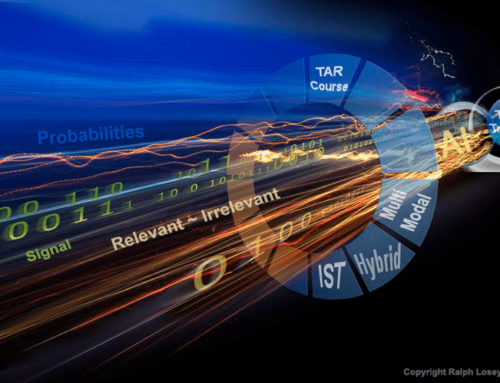Artificial Intelligence Key Terms:
Over the last several years there has been a steady growth in the testing and application of artificial intelligence (AI) solutions for legals ops and litigation teams. Many applications are still in early states, but some are beginning to be adopted enterprise-wide. For the application of AI platforms to increase, legal service providers must encourage AI education. Here is a list of artificial intelligence key terms that everyone working with data and technology should know.
Algorithm: a formula or set of rules for performing a task
An algorithm is considered a problem solver mainly used by computers. In AI, an algorithm informs the machine how to go about finding answer to questions and solutions to a given problem.
Machine Learning: a subfield of computer science that gives computers the ability to learn without being explicitly programmed
Machine Learning has evolved from the study of pattern recognition and computational learning theory in artificial intelligence. It also explores the study and construction of algorithms that can learn from and make prediction based on data. Instead of following strictly static program instructions , these types of algorithms make data-drive predictions and/or decisions. Machine learning is used in a wide range of computing tasks where programming explicit algorithms is not feasible. Some examples of these applications are optical character recognition (OCR), spam filtering, and search engines.
Deep Learning: a branch of machine learning based on a set of algorithms that attempt to model high level abstractions in data
Deep learning is also known as deep structured learning, hierarchical learning, or deep machine learning. This type of learning uses a deep graph with multiple processing layers composed of multiple linear and non-linear transformations.
Supervised Learning: computers are taught by example
In supervised learning, computers learn from past data and applies the learning to present data to predict future events. Both input and the desired output data help fuel the prediction of future events. For accurate predictions, the input data is tagged as the right answer. All supervised learning algorithms are basically complex algorithms that are categorized as either classification or regression models. Classification models are used for problems where the output variable can be categorized as “yes,” “no,’ “relevant,” or “not relevant.” Regression models are used for problems where the variable output is a real value such as a unique number, dollars, salary, weight, or pressure. Some practical applications of supervised learning algorithms are face detection, signature recognition, text categorization, and document review.
Unsupervised Learning: the method that trains machines to use data that is neither classified or labeled
In unsupervised learning, no training data is provided and the machine learns by itself. It must be able to classify the data without prior information about the data. The purpose of this is to expose a machine to a large volume of varying data and allow it to learn from that data to provide insights and identify hidden patterns.
For more Tidbits & Thoughts, please click here.






